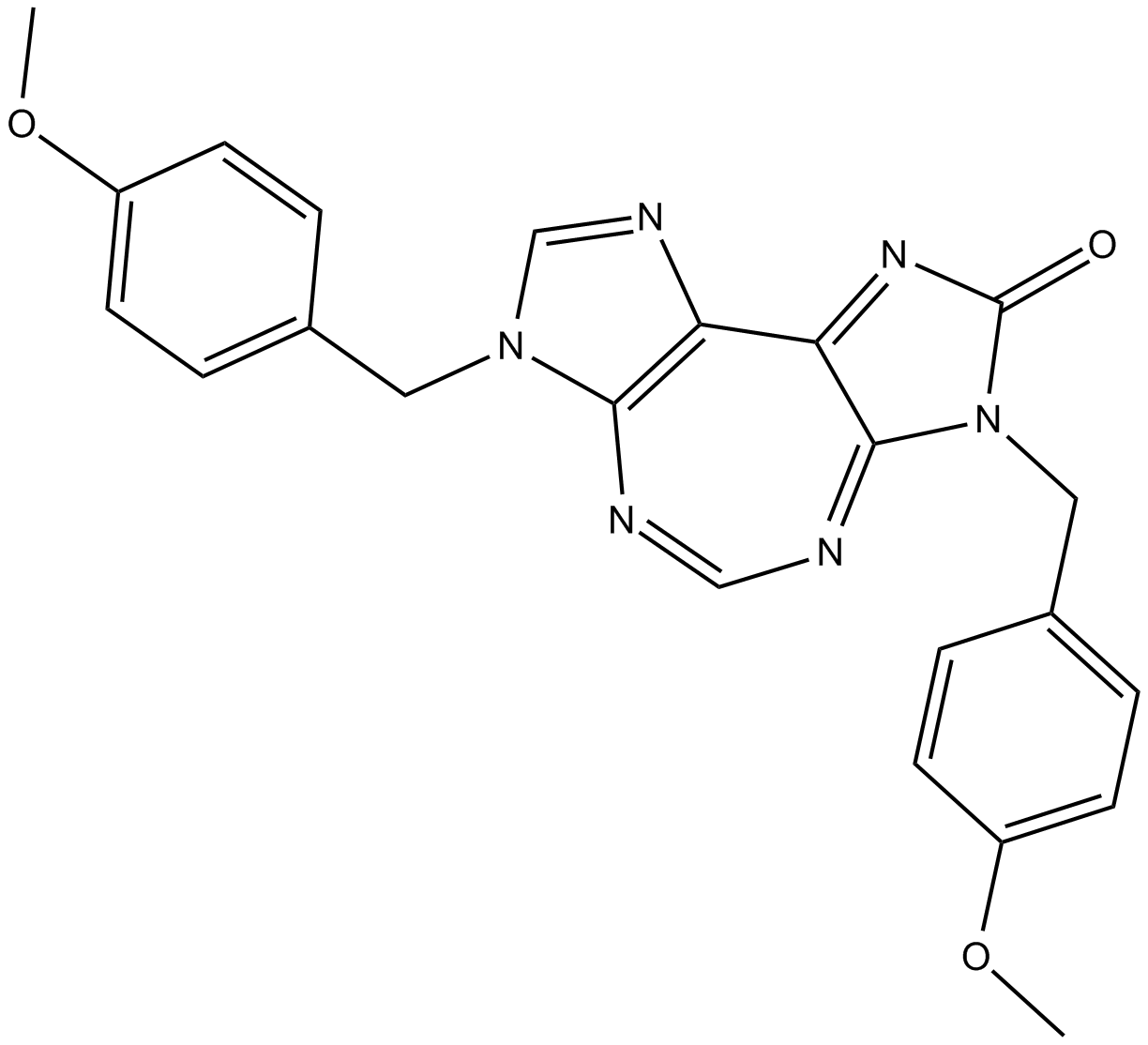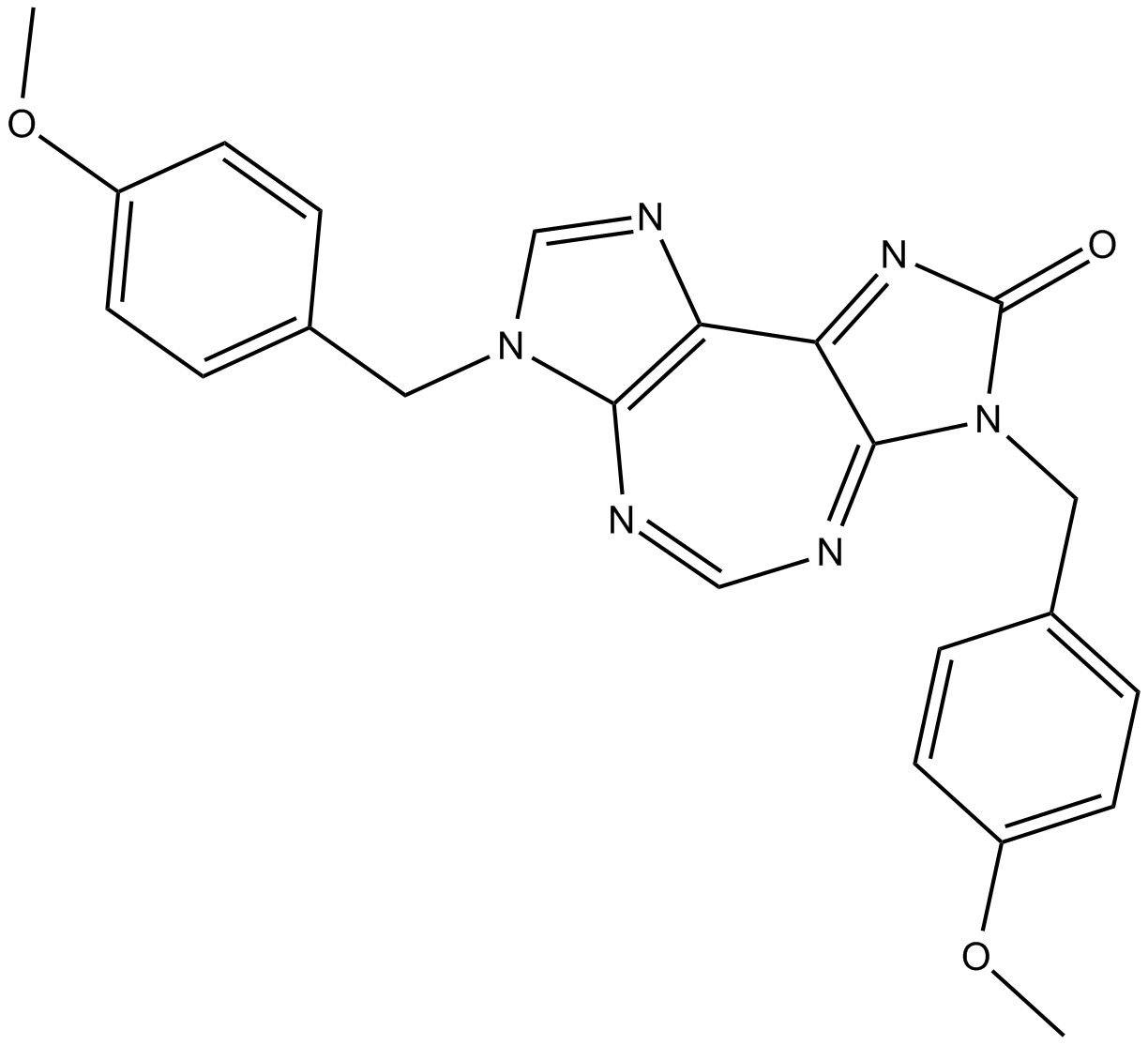RK-33
IC50: 4.4-8.4 μM for cancer cell lines with high levels of DDX3 expression (A549, H1299, H23, and H460)
RK-33 is a DDX3 inhibitor.
DDX3 has been identified as a RNA helicase that is overexpressed in various cancer types such as lung cancer and is correlated with lower survival in lung cancer patients.
In vitro: RK-33 was reported to bind to DDX3 and abrogated its activity. Inhibition of DDX3 by RK-33 resulted in G1 cell cycle arrest, induced apoptosis, and promoted radiation sensitization in DDX3-overexpressing cells. Moreover, the loss of DDX3 function caused by RK-33 impaired Wnt signaling via disruption of the DDX3-β-catenin axis [1].
In vivo: The effect of RK-33 with a fractional dosing regimen was studied in the Twist1/KrasG12D lung cancer model. Results showed that during the 3 weeks treatment, a modest decrease in tumor growth with radiation and even more so with the combination of RK-33 and radiation. Therefore, these data indicated that RK-33 in combination with hypofractionated radiation was able to decrease lung tumor load effectively in preclinical lung cancer models and performed much better than the commonly used radiosensitizer carboplatin [1].
Clinical trial: Up to now, RK-33 is still in the preclinical development stage.
Reference:
[1] Bol GM et al. Targeting DDX3 with a small molecule inhibitor for lung cancer therapy. EMBO Mol Med. 2015 Mar 27;7(5):648-69.
| Physical Appearance | A solid |
| Storage | Store at -20°C |
| M.Wt | 428.44 |
| Cas No. | 1070773-09-9 |
| Formula | C23H20N6O3 |
| Solubility | ≥21.4 mg/mL in DMSO; insoluble in H2O; insoluble in EtOH |
| Chemical Name | 3,7-bis(4-methoxybenzyl)-3,7-dihydro-2H-diimidazo[4,5-d:4',5'-f][1,3]diazepin-2-one |
| SDF | Download SDF |
| Canonical SMILES | COc1ccc(C[n]2c(N=CN=C(C3=N4)N(Cc(cc5)ccc5OC)C4=O)c3nc2)cc1 |
| Shipping Condition | Small Molecules with Blue Ice, Modified Nucleotides with Dry Ice. |
| General tips | We do not recommend long-term storage for the solution, please use it up soon. |
| Cell experiment:[1] | |
|
Cell lines |
Various lung cancer cell lines |
|
Reaction Conditions |
72 h incubation |
|
Applications |
Cancer cell lines with high levels of DDX3 expression (A549, H1299, H23, and H460) were more sensitive to RK-33 (IC50 = 4.4 ~ 8.4 μM) as compared to H3255, a cell line with low DDX3 expression (IC50 > 25 μM). In addition, RK-33 also sensitized A549 cells to γ-radiation whilst it had no effect on the sensitivity of H3255 cells to γ-radiation. Therefore, RK-33 was able to inhibit cancer growth and radiosensitize lung cancer cells in a DDX3-dependent manner. |
| Animal experiment:[1] | |
|
Animal models |
Athymic NCr-nu/nu mice injected with A549 cells |
|
Dosage form |
20 mg/kg Injected intraperitoneally |
|
Applications |
RK-33 significantly enhanced radiation-induced tumor regression in the orthotopic human lung cancer model. Hence, inhibition of DDX3 by RK-33 could be potentially utilized for lung cancer therapy. |
|
Note |
The technical data provided above is for reference only. |
|
References: 1. Bol GM, Vesuna F, Xie M, et al. Targeting DDX3 with a small molecule inhibitor for lung cancer therapy. EMBO Molecular Medicine, 2015, 7(5): 648-669. |
|
Quality Control & MSDS
- View current batch:
Chemical structure









